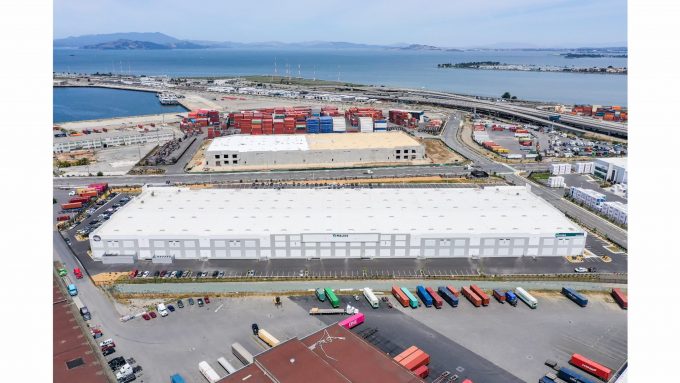3PLs look for return of growth as competition grows and revenues fall
3PLs have been facing a bundle of headwinds that have dented revenue growth for the ...
TFII: SOLID AS USUALMAERSK: WEAKENINGF: FALLING OFF A CLIFFAAPL: 'BOTTLENECK IN MAINLAND CHINA'AAPL: CHINA TRENDSDHL: GROWTH CAPEXR: ANOTHER SOLID DELIVERYMFT: HERE COMES THE FALLDSV: LOOK AT SCHENKER PERFORMANCEUPS: A WAVE OF DOWNGRADES DSV: BARGAIN BINKNX: EARNINGS OUTODFL: RISING AND FALLING AND THEN RISING
TFII: SOLID AS USUALMAERSK: WEAKENINGF: FALLING OFF A CLIFFAAPL: 'BOTTLENECK IN MAINLAND CHINA'AAPL: CHINA TRENDSDHL: GROWTH CAPEXR: ANOTHER SOLID DELIVERYMFT: HERE COMES THE FALLDSV: LOOK AT SCHENKER PERFORMANCEUPS: A WAVE OF DOWNGRADES DSV: BARGAIN BINKNX: EARNINGS OUTODFL: RISING AND FALLING AND THEN RISING

The bumpy economic conditions have pushed many transport rates to pre-pandemic lows, but warehouse rents remain stubbornly high.
And what’s worse is they are predicted to continue rising – albeit at a reduced pace.
The market will struggle with economic headwinds, according to the latest outlook by commercial real estate services firm Cushman & Wakefield.
Its analysts predict a mild recession for a US economy that has so far defied gravity, pointing to the inversion of the curves for ten-year versus two-year and ten-year versus three-month treasury yields, which are at the deepest inversion level since the early 1980s.
“There has never been a period in US economic history when both spreads inverted, let alone when the inversions have been this deep, for this long, that wasn’t followed by a recession,” they note.
Moreover, the Institute of Supply Management’s manufacturing index continued to weaken in February, stretching its downward trend to four consecutive months, they report, adding that consumer sentiment has languished at historically low levels since last summer.
US imports have fallen 3.7% overall, somewhat masking a 25.9% slump in consumer goods imports. This is only going to result in a brief slowdown in warehouse absorption rates before growth across multiple sectors next year will refuel the quest for warehouse space, according to Cushman & Wakefield.
The temporary downturn will slow the rise in warehouse rates, but won’t send them into decline, as has happened in transport modes, according to the analysts. They project the vacancy rate to creep up to 6% by the end of 2024, still tight by historical standards, and it should keep pushing pricing higher.
They predict rent growth will moderate toward 5% this year ,and add 1%-2% next year, before climbing to an average annual increase of 3%-4% after that.
But there is an opposing trend that counters the downward pressure on pricing. According to industrial real estate giant Prologis, warehouse development starts are going to fall to a seven-year low this year, a 60% decline, despite rent growth in excess of 10%.
Developments in the pipeline will shrink from more than 46.45 million sq metres in Q3 22 to about 275m sq ft by the end of this year, Prologis estimates. While the slowdown in the economy is a big factor, high interest rates are also a drag on new construction.
And Prologis anticipates further squeeze on available capacity from the e-commerce sector. In part, this is due to their expectation that e-commerce will make gains from in-store shopping, but another factor is the rise in delivery costs, forcing merchants and their fulfilment providers to open more facilities closer to consumers, particularly in urban centres.
These dynamics converge to keep a tight lid on available warehouse capacity, according to Prologis. Average vacancy rates would climb to just 5.9%, even if new demand were to fall to zero. Of its warehouse space, 98.6% was leased by early this month.
The dearth of warehousing capacity has fuelled calls for automation to boost capacity. Not everybody has the deep pockets of an Amazon or a Walmart to install robotics, though. According to a recent survey by commercial real estate firm James Lang LaSalle (JLL), six out of ten warehouse operators in the Asia-Pacific region have deployed some form of automation.
Equipment has become more affordable, especially with the emergence of ‘robotics as a service’, but the standard lease terms for warehouses are typically too short to justify the investment, JLL found. Most users described the initial CapEx outlay as a major obstacle. With lease terms often in the three-to-five-year range, they find that there is not enough time to recoup the outlay.
Moreover, automation is not suitable for everybody, the company pointed out. While it works well for e-commerce or spare parts distribution, it does not lend itself well to a small range of bulky items shipped at a slow rate.
Warehousing continues to be a challenge for cargo owners as well as logistics providers.
Comment on this article